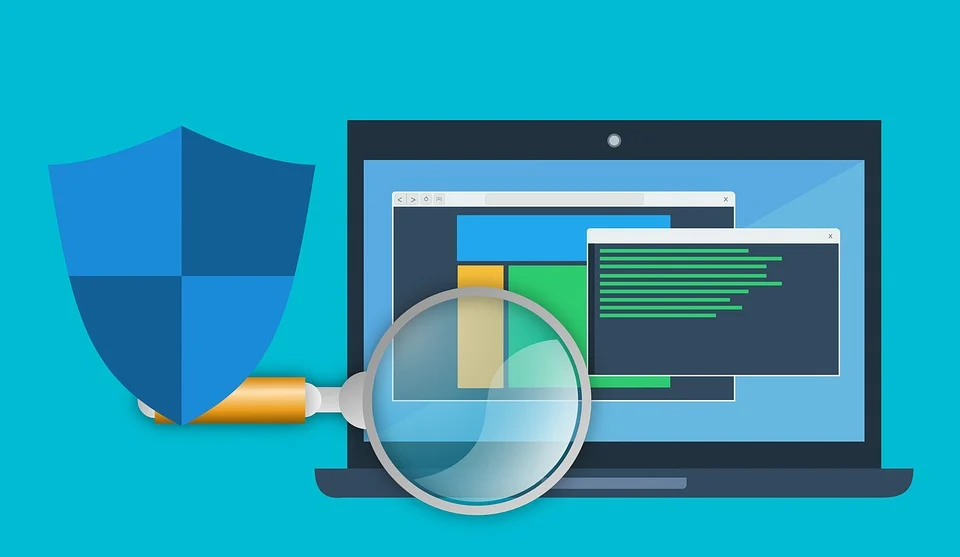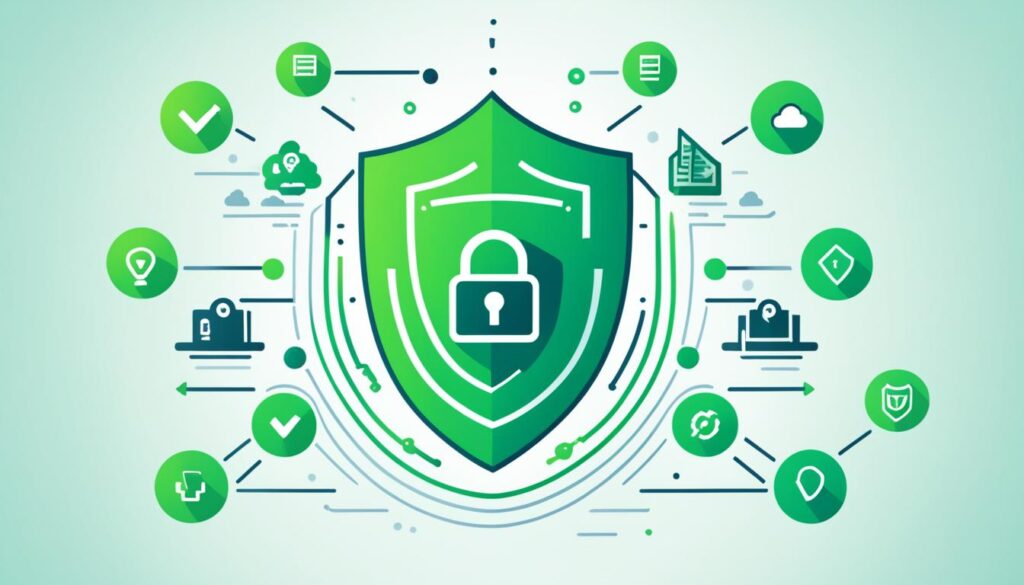What Are the Three Types of Network Service Vulnerabilities? – Network Secure

What Are the Three Types of Network Service Vulnerabilities?
Today, network services are critical. They help us share files, browse the web, check emails, and access remotely. But these services can be risky if not protected well. Ark Solvers values keeping networks secure, so we’ll look at the three big types of network service vulnerabilities.
Now more than ever, digital safety matters. So, knowing about network service risks is key. What are these risks, and how could they harm your group? Let’s dive into this vital topic and discover how to make our networks safer.
Key Takeaways
- Network services are essential for modern organizations, but they can also be vulnerable to exploitation.
- There are three main types of network service vulnerabilities: software, configuration, and human.
- Identifying and mitigating these vulnerabilities requires a comprehensive approach, including regular vulnerability scanning, secure software development practices, and strict access controls.
- Proactive and multi-layered network security measures can significantly reduce the risk of exploiting network service vulnerabilities.
- Understanding the different types of network service vulnerabilities is crucial for maintaining a secure network infrastructure.
Understanding Network Service Vulnerabilities
At Ark Solvers, we know how important network services are for businesses today. These tools let us share files, browse the web, send emails, and work remotely. They’re crucial for organizations to run smoothly. But if they’re not secured well, they can be exploited by good actors, leading to security threats and even data breaches.
Read More: What is Network Security? Definition, Importance, and Types

Defining Network Services and Their Importance
Network services are apps and protocols that let devices talk to each other on a network. They let employees work together and connect to company resources easily. Protecting these services is key to keeping a company’s data safe and operations running smoothly.
Read More: The Role of Network Security in Cyber Security: Protecting Network
The Impact of Vulnerabilities on Network Security
Leaving network services unprotected opens the door to cyber threats. These include hacks, data theft, and system disruptions. Attackers might use software flaws, weak setups, or trick someone to get in. The aftermath of these security holes can be severe. It can lead to big losses, damage the company’s image, break regulations, or halt operations.
Read More: Different Types of Cyber Security: A Comprehensive Guide
Software Vulnerabilities
At Ark Solvers, we see software vulnerabilities as a major issue for network services. These issues often come from old or unpatched software, weak coding, and flawed security protocols. They let attackers access network services, steal data, or cause problems.
Outdated or Unpatched Software
Old or unpatched software poses a big risk to network security. OrgaOrganizations must update their software as patches are released. Without these updates, network services can be easily attacked, letting unauthorized users in.
Insecure Coding Practices
Bad coding choices can make network services vulnerable. Attackers can exploit problems like poor input checks, bad access controls, and obsolete security protocols, leading to security breaches and harming the network’s trustworthiness.
Flaws in Cryptographic Algorithms
Even the security algorithms used for network encryption can have weaknesses. Attackers might find ways to uncover encrypted data. That’s why staying current with encryption best practices is vital. It helps decrease these risks significantly.
Configuration Vulnerabilities
One common type of network service issue involves config vulnerabilities. These problems often link back to insecure default settings and misconfigured access controls. This can let in people who shouldn’t have access or share info others shouldn’t see. At Ark Solvers, working on the right settings and doing security checks is crucial to fighting these risks.
Read More: Network Security for Small Business
Insecure Default Settings
Some network services are set up to be easy to use but need to be more safe. If you don’t change these initial settings, trouble could be ahead. Configuration vulnerabilities from these bad defaults might let hackers in, mess with data security, or stop important work.
Misconfigured Access Controls
Keeping a tight hold on who gets to use your network services is key to safety. But, if this is done wrong, too much power or secret info might end up in the wrong hands. It’s super important to keep checking and fixing access controls. This helps make your network safer and lowers the chances of network risk assessment.

What are the three types of network service vulnerabilities?
Our cybersecurity experts at Ark Solvers have pinpointed three main network service vulnerabilities: software, configuration, and human weaknesses. Knowing about these is vital for keeping a network safe.
Read More: What are the Types of Network Security? An Overview
Software Vulnerabilities
Software issues can originate from many sources, including outdated software, poor coding practices, and faulty cryptographic algorithms. Attackers use these flaws to gain unauthorized access, steal data, or mess with the network.
Configuration Vulnerabilities
Then, we have configuration vulnerabilities. They happen when default settings are not secure or access controls are wrong. This can let bad actors into the network or expose critical data. To fight this, we need good management and regular checks.
Human Vulnerabilities
Human errors are also a big threat to network service security. Attacks on people, like social engineering, can trick them into giving access to information. Even trusted insiders can cause harm. If employees don’t know about security, they might do things that risk the network.
Social Engineering Attacks
Scammers use social engineering to get people to share secret info or do things that harm security. They might send fake emails, act like they’re someone they’re not, or manipulate trust. Ark Solvers need to train staff to spot and stop these tricks. This lowers the chance of a scam working.
Insider Threats
Insider threats happen when someone inside misuses their access. This could be because they’re unhappy, or they unknowingly make parts of the network less safe. To fight this, Ark Solvers should set strict access rules, keep an eye on things, and have clear security policies. This makes it harder for insiders to cause harm.
Lack of Security Awareness
Employees who know little about security can sometimes cause problems. They might choose weak passwords, fall for scams, or download dangerous software by mistake. Ark Solvers must teach their team about security. This shows everyone how critical good security habits are and helps keep the network strong.

Identifying and Mitigating Network Service Vulnerabilities
Ark Solvers knows how crucial it is to protect your network from threats. We use various methods to find and stop network vulnerabilities. This includes regular checks and tests, secure coding, and controlling who can access what.
Regular Vulnerability Scanning and Penetration Testing
We always keep an eye on your network services to stop threats early. Our cybersecurity experts do regular checks and tests to find weak spots. By fixing these issues before they cause harm, your network stays safer.
Implementing Secure Software Development Practices
Building secure software is key to keeping your network safe. We help our clients use safe coding, update software often, and fix any security gaps in the code. Doing this right cuts down on new problems, keeping your network solid.
Enforcing Strict Access Controls and Least Privilege Principles
How users can access your network matters a lot for security. We make sure only the necessary number of people can do certain things. This prevents big problems if someone tries to hack in, protecting your data.
Our proactive methods and many steps help keep your network safe from bad actors. We offer full solutions that strengthen your network and keep your important information secure, allowing your organization to continue running smoothly.
FAQ
What are the three types of network service vulnerabilities?
There are three main types of network service vulnerabilities. These include software, configuration, and human aspects.
Software issues often come from old or unpatched programs. These may use bad coding practices and have errors in their security setups.
Poor default settings can cause configuration problems. Also, access controls need to be set correctly so that the right people can see important data.
Human errors are another big risk. People can be tricked into revealing security details or might misuse their access for harmful purposes.
What are software vulnerabilities in network services?
Network software can be risky for many reasons. Not updating programs can let attackers in through undiscovered holes, which is why regular updates are crucial.
Bad coding is another point of failure. If developers don’t check their code carefully, it could allow for unauthorized access or information leaks.
Then, we have issues with data security. Mistakes in how information is kept private can open the door to cyber theft.
What are configuration vulnerabilities in network services?
Configuration vulnerabilities can be as serious as software problems. For example, if systems are set up carelessly, they could be vulnerable.
Access controls that need to be properly tuned are also dangerous. It’s like leaving the front door open for those who shouldn’t get in.
Both default and custom settings need a careful eye to prevent trouble.
What are human vulnerabilities in network services?
Employees can sometimes be the weak link in security. If they’re not well-informed, they may unknowingly help hackers or misuse their privileges.
Social engineering can trick even the most cautious staff into making a mistake. This can have serious consequences for the network’s safety.
Malicious insiders are also a real threat. Anyone with access to sensitive areas could do a lot of harm without the right oversight.
How can organizations identify and mitigate network service vulnerabilities?
Organizations can do several things to make their networks safer.
They should scan for vulnerabilities and test their defenses regularly. This can catch problems before they turn into actual threats.
Developing code securely is another essential step. It helps keep the network from being an easy target for hackers.

